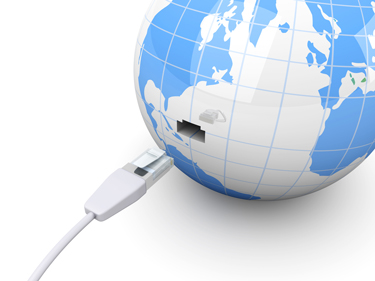Tech Tools to Track Your Expatriate Workforce
Software solutions can show you where in the world your global employees are.
 Technology and automation have made the task of managing an expatriate workforce easier than ever.
Technology and automation have made the task of managing an expatriate workforce easier than ever.
New products abound to tackle various phases of HR administration, from strategic talent management on the front end to repatriate satisfaction surveys on the back end. Today, HR professionals responsible for managing expatriate administration processes have a wide range of tech tools from which to choose. These tools include relatively low-tech solutions such as simple Excel spreadsheets, templates and e-mail as well as more-robust approaches such as integrated databases, calculators, employee portals and monitoring tools that can translate every aspect of the expatriate experience—from pre-assignment preparations to an employee’s repatriation—into reliable data.
But when should you seek out new technology, and when should you keep using low-tech methods?
Let’s look at what parts of the expatriate management cycle are most amenable to technology solutions and then consider when and how they might be implemented to optimize your organization’s processes.
To Adopt or Not?
In determining what technologies to adopt to manage expatriate administration, HR should ask the following questions:
What is our head count for expatriated employees? Has that number recently changed? Obviously, the smaller the number, the less likely that you need the latest high-end technology. And while employers have varying tolerances for ratios of management to staff, for outsourcing and for centralization, at some point an organization would be prudent to consider using expatriate management tools. Based on our experience, the threshold for adoption lies somewhere between 50 and 100 expatriates working in five or more countries. That’s when an employer may gain significant benefits from getting regular data updates from third-party providers, achieved through tracking and automating its expatriation administration process.
What is the cost of an error compared to the cost of technology? The cost of an error in managing even one major expatriated executive can be surprisingly high. Expatriates talk to each other—both within your company and within the expat enclaves they live in. So they often have a clear idea of how their total remuneration packages—including base pay, housing, cost-of-living adjustments, quality-of-living adjustments, retirement benefits, etc.—compare with those of other expats. A large error can mean years of overpaying for a portion of their stay or paying the wrong amount of taxes, requiring backtracking or even audits to get expat expenses back in line with company norms. That cost could exceed that of the technology itself.
What is the return on investment of our expatriate program? Most multinational employers are looking critically at the costs and benefits of having employees assigned outside their home countries. If your company has not relied on technology to provide objective, consistent data to support the major elements of expatriate compensation, you may have numerous exceptions to stated policies. If you compute each expatriate’s compensation using a common spreadsheet that does not tie into your other human resource information systems, it may be difficult to identify and justify total costs.
How many types of expatriates do we have? Globally, mobile employees come in many forms, from frequent business travelers to “global nomads” who never return “home.” Newer companies with fewer, younger expatriates will have different needs than multinational employers with more-mature programs. Whatever their size and stage, companies can use mobility programs to make useful distinctions among skilled positions needed urgently to get a project underway in a new market vs. developmental positions needed to train future leaders for senior roles.
In each case, technology can help your HR function craft, articulate and maintain specific expatriate remuneration profiles tailored to the goals of the assignment.
The use of outside vendor software to manage international assignments varies significantly by region, ranging from a high of 25% of companies in North America, to 16% in Europe, 7% in Asia-Pacific and 0% in Latin America.Source: Mercer. |
Are we keeping track of expatriates? Compared to domestic employees, an expatriate workforce can be difficult for HR to track. You should know, in real time, who is on assignment, exactly where they are (including specific addresses), what dependents are in the country, how long visas are valid, countries of origin and even medical coverage status. Particularly with unexpected perils such as an international health crisis like the Ebola virus, knowing where your employees are is essential to managing risk.
If you can’t produce accurate reports on that information quickly, you may need better technology.
Are our expatriates happy? Periodic attitude surveys can help employers determine how satisfied their expatriates are with their assignments. And that information can be used to help decide whether to invest in more technology. If some of your expatriates are about to jump ship because they are not getting paid on time, their families are miserable or their taxes are fouled up, it may be time to move beyond low-tech tools.
Adoption And Implementation
Sometimes an acquisition that significantly expands an organization’s pool of expatriated employees will force the issue of technology adoption in order to reduce the workload on HR. In other instances, a shift in leadership can result in a change in the level of technology an employer is willing or able to adopt.
Whatever the reasons, employers are using technology to support their global mobility programs in a number of ways:
- To create compensation packages for expats.
- To calculate in-house cost projections.
- To track employee rosters in real time.
- To run payroll updates.
- To produce immigration status reports in a matter of minutes.
With or without a triggering event, whoever manages your company’s expatriation administration should periodically conduct a technology assessment to identify the benefits of an implementation.
Some organizations are able to manage their entire expatriate process using only one automated system.
When assessing your company’s needs, carefully weigh the benefits of adopting technology against your overall business challenges and consider the products available that can help you manage the expatriate process.
Ed Hannibal is a partner in Mercer’s Information Products Solutions business and leads Mercer’s Global Mobility practice. He can be reached at edward.hannibal@mercer.com.
Yvonne Traber leads Mercer’s Global Mobility Technology Solutions for the Europe, Middle East and Africa region. She can be reached at yvonne.traber@mercer.com.
Paul Jelinek is a principal and Global Mobility product line leader in Mercer’s Technology Solutions group. He is responsible for defining the product vision and road map. He can be reached at paul.jelinek@mercer.com.
©2015. International Association for Human Resource Information Management. Used with permission.
Advertisement
An organization run by AI is not a futuristic concept. Such technology is already a part of many workplaces and will continue to shape the labor market and HR. Here's how employers and employees can successfully manage generative AI and other AI-powered systems.
Advertisement



